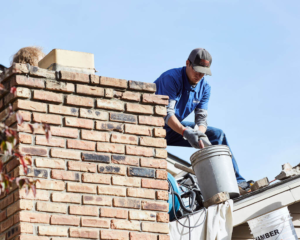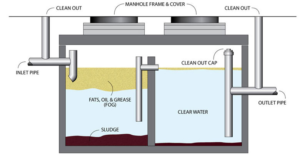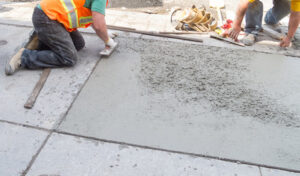House buyers face a complex and rapidly changing market that demands both strategic planning and deep market knowledge. Purchasing a house is one of the most significant financial decisions a person can make, and the process involves navigating through various financial, legal, and emotional considerations.

Buyers must balance their personal preferences and lifestyle needs with market conditions, property values, and long-term financial stability. Understanding the modern dynamics of house buying helps potential buyers make informed decisions and secure a property that meets both their practical and emotional needs. Read on We Buy Houses New Hampshire for more information.
The motivations behind house buying have evolved over the years, influenced by economic factors, social trends, and personal circumstances. Traditional motivations such as starting a family, building wealth through property investment, and securing long-term financial stability remain relevant. However, modern buyers are increasingly influenced by lifestyle factors, including the desire for flexible living spaces, proximity to work or social hubs, and environmental sustainability. Buyers today are more aware of the importance of home design, energy efficiency, and technological integration. Smart home features, renewable energy options, and eco-friendly construction materials have become major selling points in the housing market.
Financial readiness plays a pivotal role in the house-buying process. Buyers need to assess their financial standing, including their credit score, debt-to-income ratio, and available savings for a down payment and closing costs. Securing a favorable mortgage rate requires a strong financial profile and a clear understanding of the different loan options available. Fixed-rate and adjustable-rate mortgages offer different advantages and risks depending on market conditions and the buyer’s long-term plans. Buyers must also factor in ongoing costs such as property taxes, homeowners’ insurance, maintenance, and potential homeowners’ association fees. Misjudging these expenses can strain personal finances and create long-term challenges in homeownership.
Market conditions heavily influence the house-buying experience. In a seller’s market, where demand exceeds supply, buyers face intense competition, higher prices, and limited inventory. Properties often receive multiple offers, pushing buyers to act quickly and make competitive bids. In such markets, buyers may need to offer above the asking price, waive certain contingencies, or secure pre-approval for a mortgage to strengthen their offer. Conversely, in a buyer’s market, where supply exceeds demand, buyers have more negotiating power and can take time to evaluate multiple properties. In these conditions, buyers may secure better pricing, request repairs, and negotiate favorable terms. Understanding the market cycle and adapting strategies accordingly helps buyers make confident and calculated decisions.
The process of house hunting requires careful evaluation of various factors beyond just the property’s price and size. Location remains a top priority for most buyers, influencing property value, convenience, and lifestyle. Proximity to work, schools, healthcare, and recreational facilities affects the property’s long-term value and personal satisfaction. Buyers also evaluate the neighborhood’s safety, infrastructure, and future development plans. A well-located property in a growing area often appreciates in value, making it a sound long-term investment. However, buyers must also assess potential downsides such as noise levels, traffic congestion, and environmental risks. Thorough research and site visits are essential to understanding the property’s surroundings and future prospects.
The condition of the property is another crucial consideration. Buyers often hire professional inspectors to assess the structural integrity, electrical systems, plumbing, roofing, and HVAC systems of a house. Undetected issues such as mold, water damage, foundation cracks, and outdated wiring can lead to expensive repairs and reduce the property’s overall value. Buyers may negotiate with sellers to address these issues or adjust the purchase price accordingly. Modern buyers are also interested in the energy efficiency and environmental footprint of a property. Well-insulated windows, solar panels, energy-efficient appliances, and sustainable building materials enhance the property’s appeal and reduce long-term operating costs.
Financing challenges remain one of the biggest hurdles for house buyers. Rising interest rates, tightened lending criteria, and fluctuating property values can create uncertainty and limit buyers’ purchasing power. Buyers with lower credit scores or limited savings may face higher borrowing costs and fewer loan options. First-time buyers often encounter additional challenges due to limited financial history and lack of familiarity with the mortgage process. Government-backed loan programs, down payment assistance, and financial counseling services can help buyers overcome these barriers and secure favorable financing terms. Educating buyers about their financing options and encouraging financial discipline enhances their ability to navigate these challenges effectively.
Emotional factors also play a significant role in the house-buying process. Purchasing a house is not just a financial transaction—it represents a significant life milestone and a reflection of personal identity. Buyers often experience a mix of excitement, stress, and uncertainty throughout the process. Fear of missing out, competition from other buyers, and pressure to make quick decisions can cloud judgment and lead to impulsive choices. On the other hand, finding the right property that meets both emotional and practical needs creates a sense of accomplishment and long-term satisfaction. Effective communication with real estate agents, financial advisors, and legal professionals helps buyers manage these emotions and make rational decisions.
Legal considerations add another layer of complexity to house buying. Buyers must navigate through contracts, disclosures, and property titles to ensure that the transaction is legally binding and free of complications. Title searches uncover any existing liens, easements, or ownership disputes that could affect the property’s value or use. Buyers are also responsible for securing homeowner’s insurance and complying with local zoning and building codes. Understanding these legal requirements and working with experienced legal professionals ensures a smooth and legally sound transaction. Failure to address these issues can lead to costly legal disputes and jeopardize the buyer’s investment.
Investment potential influences many buyers’ decisions. Real estate remains one of the most stable and lucrative long-term investments, providing both capital appreciation and rental income opportunities. Buyers often evaluate the potential for future property value increases based on market trends, neighborhood development, and economic conditions. Renovation and improvement projects can further enhance the property’s value and appeal. However, market fluctuations, regulatory changes, and economic downturns can affect property values and rental income potential. Diversifying real estate investments and maintaining a long-term perspective help buyers manage these risks and maximize their investment returns.
Buyers also consider future lifestyle needs when purchasing a house. Life changes such as marriage, children, career advancements, and retirement influence housing preferences and space requirements. Buyers seek properties that offer flexibility and adaptability to accommodate these changes. Open floor plans, additional bedrooms, and multi-purpose spaces allow for greater versatility and future expansion. Outdoor spaces, home offices, and smart home technology also enhance the property’s functionality and appeal. Buyers who anticipate their future needs and select properties with adaptable features are better positioned to enjoy long-term satisfaction and avoid the need for frequent relocation.
The rise of digital platforms and real estate technology has transformed the house-buying process. Buyers now have access to detailed property listings, virtual tours, market analysis, and real-time pricing information through online platforms. Mobile apps and real estate websites provide buyers with greater control and transparency throughout the search and negotiation process. Machine learning and data analytics enable buyers to identify emerging market trends and compare property values more accurately. However, the sheer volume of available information can also overwhelm buyers and create decision fatigue. Working with experienced real estate professionals who understand market trends and buyer preferences helps streamline the process and improve decision-making.
House buying remains a dynamic and multifaceted process shaped by economic, social, and technological changes. Successful buyers approach the process with a balance of financial preparedness, market knowledge, and emotional resilience. Understanding the complexities of financing, property evaluation, legal requirements, and future investment potential enables buyers to make informed decisions and secure a property that meets their immediate and long-term needs. The ability to adapt to changing market conditions, leverage professional expertise, and anticipate future lifestyle changes positions buyers for long-term satisfaction and financial success in homeownership.




